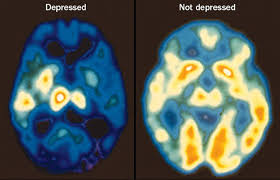
How Can We Relieve Those Who Suffer so Terribly…?
Mania goes way back. And the destruction it causes goes way deep. We’ve searched for centuries for a way to bring relief to those who suffer so terribly.
Sometimes we in medicine go out on a limb, or strike a new path. Other times we fiddle to get things just right–or just calmed down enough to get through the night. Still other times we could tear our hair out in frustration. Getting it right could mean the difference between life and death.
Bipolar disorder is a poorly understood illness, with great and terrible symptoms. It’s one of the most debilitating psychiatric illnesses that exists. And despite all the advances in psychiatry and neuroscience, doctors still reach for lithium.
Pretty incredible, right? Who does that? Old fuddy-duddies? The docs who don’t read, who don’t keep up? Surely, a digital native would never prescribe lithium. Or take it. It’s an old drug, past its prime. No news there… Right?
Wrong.
What we’re learning about what lithium actually does is going to help turn bipolar disorder on its ear.
“Mood Swings,” As If They’re Fun
You read about “mood swings” and it’s almost as if they’re a simple and harmless variation from one frame of mind to another… but that doesn’t even scratch the surface.
Picture yourself in the middle of your day, mowing the lawn or cleaning up the kitchen or checking your phone. You begin to notice an intensifying anxiety coupled with agitation rising up inside you … thoughts race through your mind of an experience where you were deeply hurt by someone.
How Do You Heal…? How Do You Forget?
The hurt escalates to bitterness, then to thoughts of vindictive retaliation. You’ve completely dropped what you were doing, as you storm through the house or office.
It feels as though you’re about to lose it.
Before you know what’s happened, you’re in a rage. Could be a seething, jaw-clenching, lip-pursing internal rage … or one of those really awful ones — throwing dishes and glasses, lamps or staplers, shattering them against the wall. Impulsive actions mix with unbearable emotional pain and you throw whatever you can grab… or knock over a table, hurl a chair across the room, spew the most diabolical phrases you can imagine.
This may go on for minutes or hours.
Bipolar Episodes
Eventually, it passes. You look around you and see the destruction you left in your wake… faces of people you care about looking crestfallen and shell-shocked. You realize what you’ve done and you don’t know why. Shame fills you up and overflows. You look for privacy to try to stabilize. Then, you realize how much it’ll take to start repairing the damage to property and relationships. The sorrow you feel about this ugliness…the helplessness you feel to control it….the constant humiliation that follows you like a cloud … it all becomes too overwhelming.
And you feel your emotions sinking… sinking… nosediving…. til the despair and futility of living your own life seems utterly insurmountable, and the only solution in your mind is to end it.
For some people who suffer from bipolar disorder, this pretty much describes their day. For others, an episode like this might occur once a month, or maybe once a year.
The Whiplash of Terrifying Highs and Life-Threatening Lows
And there’s more.
There are times when you could feel on top of the world, capable of doing anything, and the longer you feel that way, the more super human you may feel. You might begin to believe you can fly, and you might even try it … from a rooftop.
Or you might believe you can lead your followers to conquer the world or the markets…or…you might believe you can have sex without risk of pregnancy, just by “willing” the sperm to never find the egg.
You might believe you’re destined to change the world, or become famous, or be adored. Or that you have unlimited wealth and will never feel the loss of money spent.
and will never feel the loss of money spent.
The scenarios are as broad as there are people with this illness.
But, one thing you learn: The higher “UP” you go in mania, the farther down you’ll probably nosedive in depression.
Mood swings?
More like Saturn V mega-rockets that zoom to the moon — but then take a U-turn and dive right into hell. These are more than moods…and the changes are far more intense than “swinging.”
No one should have to live with these careening, catastrophic whiplashes.
Lithium: Old Drug Lights Path to New Hope
Medical studies have found little to understand what really causes these actions, these “mood swings.” There are so many factors that come into play that it’s dizzying. But we have found medications that seem to help some of the time.
The first medication that was found to be useful in some cases was lithium, which helps about a third of people with bipolar disorder. What does lithium do in bipolar disorder…? Quite a lot, in those who respond to it. But how it works has been a mystery.
Until recently. A network of neuroscience researchers across the globe set up an incredibly elegant way to study the action of lithium within brain cells so they could better understand what lithium actually does to help someone suffering from bipolar disorder, and in doing so, they were able to see a new target for this illness.
Learning the Mechanism of Bipolar Disorder, through Lithium
Sort of like following the bread crumbs back to the beginning to find new solutions for better outcomes.
Since lithium only helps about 35% of people who suffer with bipolar disorder, the plan was to find out HOW it works to help those people, then develop new treatments that might help them and possibly the other two-thirds whom lithium doesn’t even touch.
The Problems with Lithium
Because, even for those 35% whose brains respond to lithium, many abandon it because of the serious problems it can sometimes cause.
For one thing, there’s a tiny window within which lithium is helpful…or “therapeutic.” Not a lot of swing room in the narrow little range before side effects begin, and they’re obvious when they happen: nausea, diarrhea, tremor, thirst, excessive urination, weight gain. Go too high and the body gets toxic.
For some, lithium works–in fact for some, it’s the only thing that’s ever worked, despite its risks–but not all people. Why is that?
Neuroscientists Keep Probing
To explain their amazing work, and what they learned from it, we’re going to have to get a bit “science-y”… so grab your lab goggles and get ready to roll.
These researchers started with a certain type of stem cell. They used pluripotent stem cells, that is, the type that can develop into every type of cell found in the human body. (There are other types of stem cells, such as those that only develop into particular types of cells. Forget about them.)
These pluripotent cells were taken from people who suffered with bipolar disorder, and who were already being helped by lithium. That’s the key. They wanted to watch what happens when lithium is introduced into the cells of a person who IS responsive to lithium, to learn how it helps, and why.
Lithium’s Pathway
The outcome of their in-depth study was this: they found a pathway lithium follows to bring relief to those who respond to it. They found that people with bipolar disorder have abnormally elevated CRMP2, which is a protein necessary for sending signals through the neurons.
Dendrites are the structures on the neurons that receive electrical messages. The dendritic spine is a tiny little protrusion from the dendrite that’s a storage compartment for the synapse…you know, the connection that sends out a messages to another neuron . . . or to millions.
Hefty Science, but Exciting News!
Ok, ok, a lot of vocabulary here … but stay with me.
- CRMP2 – a protein necessary for sending signals through the neurons that influences their structure
- dendrites – structures on the neurons that receive electrical messages
- dendritic spines – tiny protrusions from the dendrite that are storage compartments for the synapse
- synapse – the connection between neurons that sends out messages
So these researchers discovered that with lithium in someone who is responsive to it, the CRMP2 protein is instrumental in changing the dynamics in the neuron at the dendrite and dendritic spine formation. To bring it into more normal function. It normalizes the set-point. And that helps stabilize that person’s mood.
The discovery that lithium has this effect on the CRMP2 protein helps us better understand what it is that goes awry in bipolar disorder. It’s not simply a question of a gene. There’s actually a protein that can be toggled off and on in real time to create a better set point for mood and behavior. To create more longer and more dense branching in dendrites. More dense dendritic spines. Growth.
We know there are other ways that lithium acts, too. But understanding this opens up a promising pathway for researchers to explore and target with new treatments. This is lithium: old drug lights path to new hope for bipolar disorder sufferers. It’s a big step forward.
The more that’s understood about bipolar disorder, the more we can do to help those who suffer.
Lithium Helps 35% – What about the rest?
So, since lithium is one of only a very few medications that help people who have bipolar disorder stabilize, and it’s only effective in about 1/3 of bipolar patients, we clearly need more means of treatment.
Ketamine treatment and TMS have both shown a strong tendency for treating depressive episodes in bipolar disorder. There are other medications that can be used as mood stabilizers, too (although none of the ones tested affected CRMP2), and lifestyle changes that can help create and maintain well-being and minimize mood swings.
Now…the mood swings of bipolar disorder. What if you could take the depression part of bipolar disorder out of the mix?
Erase Suicidal Thinking
And what if you could erase suicidal thinking? The suicide rate for people with bipolar disorder is somewhere between 30-50%. And keep in mind, that statistic is for those who succeed in ending their life. The rate of those who attempt suicide, or think about and plan it, is much, much higher. What ketamine treatment can do, that lithium can’t, is erase suicidal thinking rapidly. Within four hours. It takes five days to achieve a therapeutic level with lithium. Five days.
When the suicidal thinking stops, the suicide attempt thankfully doesn’t happen. It not only saves the life of the person suffering with the disorder, but it also spares the family.
As we continue to work with these advances, we encourage you to reach out to us if you’ve suffered with a mood disorder without relief from your treatment. Our practice specializes in patients who’ve found no help in other treatments. We’ll do a thorough evaluation to determine if you’re a candidate for one of the innovative new treatments in psychiatry that are giving our patients their lives back.
We’re here to help you find your most happy and fulfilled self.
Call us or arrange an appointment for a thorough evaluation to determine the best treatment for you.
To your best self through science,
Lori Calabrese, M.D.
